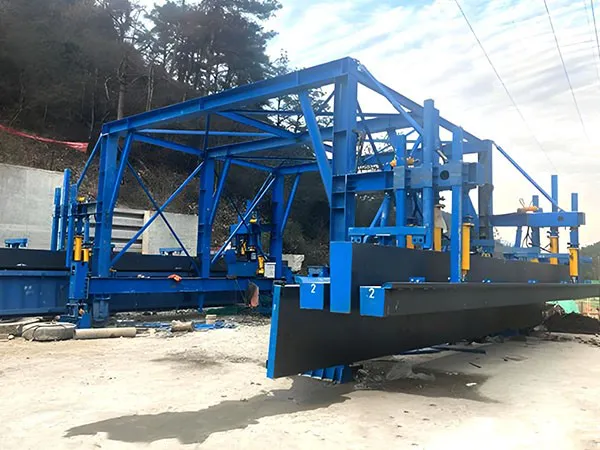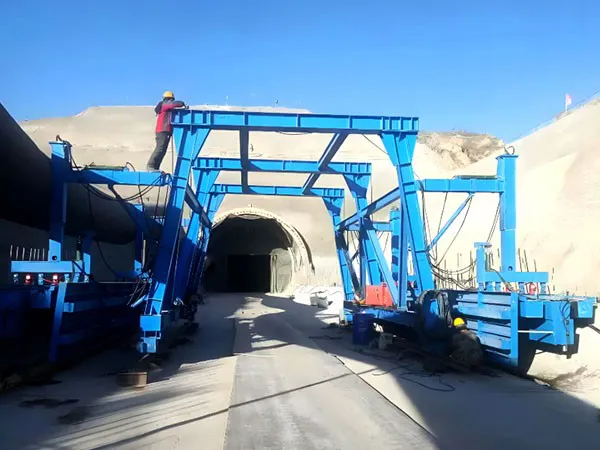In modern tunnel construction, the tunnel lining trolley—also known as a formwork trolley or lining formwork system—is a crucial piece of equipment used to support and shape the inner concrete lining of tunnels. As tunnels are built in various geological conditions and for different purposes (such as transportation, mining, or water conveyance), the choice of lining trolley can significantly impact construction efficiency, structural quality, and overall project cost.

Choosing the right lining trolley is crucial for the efficiency, safety, and cost-effectiveness of any tunnel project.
Tunnel Cross-section: The shape and size of the tunnel (e.g., circular, horseshoe, rectangular, large-span, small-span) will dictate the formwork design and, consequently, the type and dimensions of the lining trolley. Different trolleys are designed for highway tunnels, railway tunnels, subway sections, water diversion tunnels, etc., each with specific lining length capabilities (e.g., 4.5m to 15m).
Lining Length: The required length of each concrete lining segment will influence the trolley's design and capacity. Longer segments can reduce casting cycles but require a more robust and possibly longer trolley.
Inclination/Slope: For inclined shafts, specialized trolleys with four active wheels or hydraulic wheel-less structures are needed to handle the steep slopes.
Manual vs. Hydraulic vs. Smart/Automated: Lining trolleys range from simple, manually operated systems to fully hydraulic automatic walking trolleys and even "smart" trolleys with integrated automatic pouring, vibrating, and monitoring systems.
Efficiency and Labor Cost: Highly automated systems can significantly improve working efficiency, reduce labor intensity, and accelerate lining speed, but come with a higher initial investment. Simple trolleys might be suitable for shorter tunnels or projects with less stringent timelines.
Precision and Quality: Advanced systems offer better control over the concrete pouring process, minimizing defects like voids, insufficient thickness, and cracks, leading to a higher quality tunnel lining.
Geological Conditions: The surrounding rock conditions, groundwater presence, and in-situ stress can influence the need for specific features like enhanced support mechanisms or robust formwork to withstand ground pressure.
Logistics and Access: The ability of the trolley to be moved, mounted, and stripped easily is important for logistical efficiency. Consideration should be given to the available space for maneuvering and material transport within the tunnel.
Environmental Factors: For projects in sensitive environments, trolleys with electric motors and battery power (as opposed to diesel) can reduce noise and pollution.
Project Scale and Duration: For long-term or large-scale projects, the durability, reusability, and low maintenance requirements of the trolley become more critical for cost amortization.

Material Quality: The trolley's main structure and formwork material (e.g., Q235B, Q355 steel) should be robust, stable, and have strong load-bearing capacity to operate effectively in complex construction environments.
Formwork Rigidity: The formwork, which directly contacts the concrete, must have sufficient stiffness to ensure the quality and stable forming of the tunnel surface. This is especially critical when pump trucks are used for concrete infusion, as too fast an infusion speed can cause formwork deformation.
Corrosion Resistance: Given the often damp and sometimes chemically active environment in tunnels, the trolley's components should be treated (e.g., multiple paint layers) to prevent rust and corrosion, ensuring a longer service life.
Operator Safety: The design should prioritize the safety of the operating personnel, with features that minimize risks during operation, demoulding, and movement.
Stability: The trolley needs a stable structure with strong load-bearing capacity to prevent accidents and ensure effective operation in challenging conditions.
Ease of Operation: A "humanized" design that makes the trolley easy to operate can save manpower and reduce human error, contributing to overall project safety and efficiency.
Compliance with Standards: The trolley should ideally comply with relevant safety standards and regulations for tunnel construction.
Selecting the right tunnel lining trolley requires a thorough understanding of key project parameters including tunnel size, shape, length, construction method (e.g. NATM or TBM), and site constraints. Additionally, factors such as equipment durability, ease of operation, adaptability to curve sections, and maintenance needs must also be considered.
Gaofei
Address: 200m east of tulip garden, group 12 of zhangling community, hongshan street office, hongshan town, xigong district, Luoyang
Tel: +8616638856888
Contact: Gaofei Huang
Mobile: +86-18637923976
Phone: 0379-80881719/ 0379-60162687
QQ: 286827457
E-mail: gaofei@gf-bridge-tunnel.com